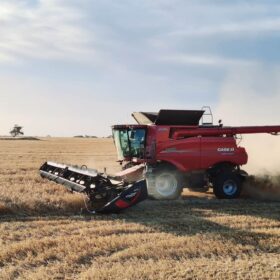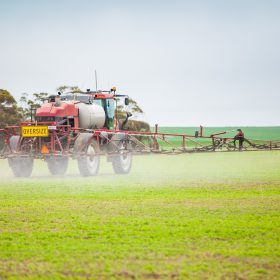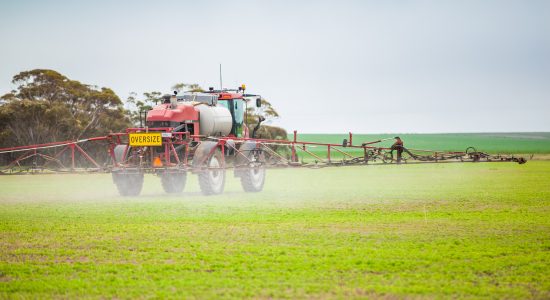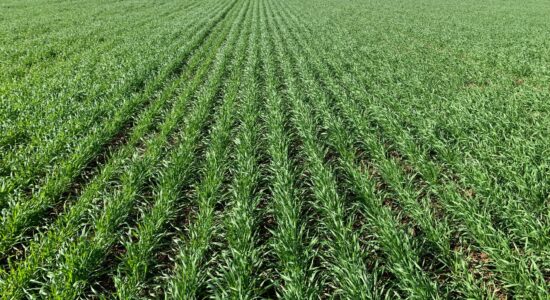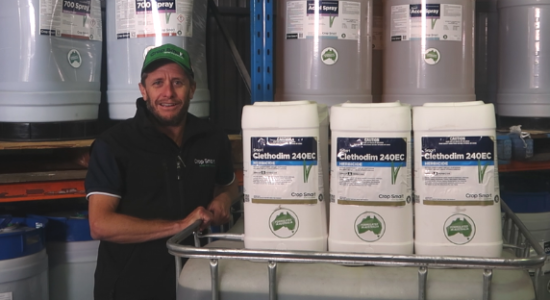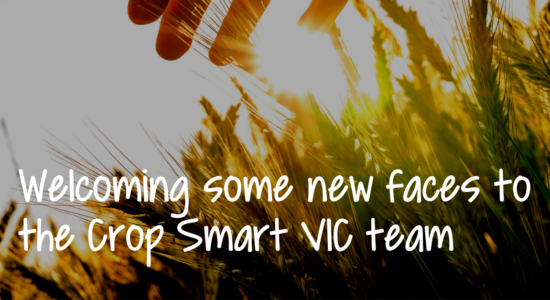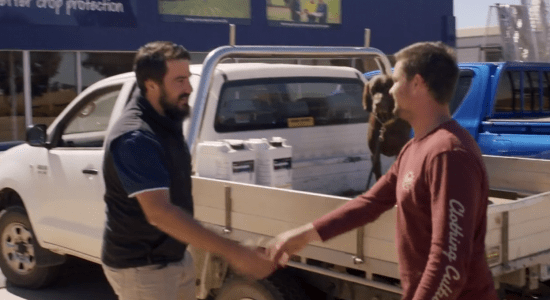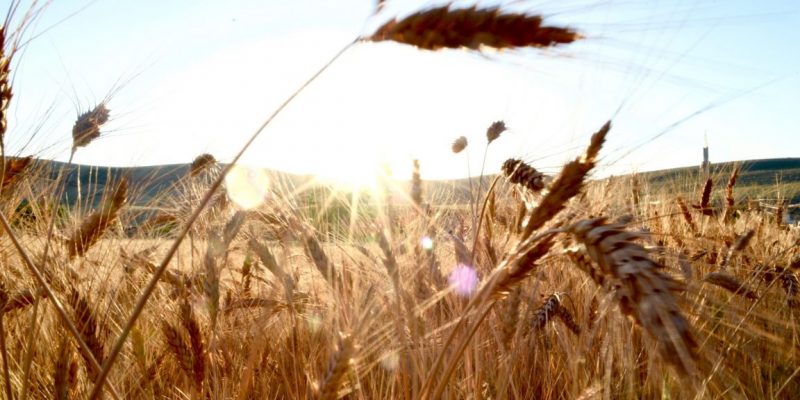
Crop Smart Seed Variety Guide 2023
If you’re looking for a seed variety not listed here please reach out to your local Crop Smart rep to confirm availability as we are able to order additional varieties that may not be listed below.
WHEAT
AH Varieties
Anvil AH CL Wheat – A quick AH quality, two gene IMI tolerant variety.
Ballista – AH short/med season very high yield CCN ,YLS
Calibre – (Tested as RAC2721) The first variety derived from Scepter to hit the market. Quick-mid maturity, improved powdery mildew resistance over Scepter. Suited to most growing regions of SA/Vic/Southern NSW. Longer coleoptile than many commonly grown varieties and very high yield.
Illabo – quick-mid maturing, AH quality winter wheat that provides a safe agronomic package to take advantage of early sowing opportunities.
Hammer CL + – Mace maturity Highest AH yielding Imy variety
Kingston – Mid-maturing AH variety with high end yield potential. Outstanding lodging resistance. Excellent physical and milling grain quality. AH classification in SA and VIC
Easy stubble management with low plant height
Reilly – Mid-maturing AH variety with stable yield in tough conditions and robust stripe rust resistance. New genetics for Australian wheat growers. Excellent physical and milling grain quality. AH classification in SA and VIC
Rockstar – ROCKSTAR has a similar time to flowering as LRPB TROJAN, High yielding, mid-late flowering variety. Good grain size, moderate plant height, similar to Mace. Stem rust MR, stripe rust MRMS, leaf rust S, yellow leaf spot MRMS, septoria MSS and powdery mildew R.
Valiant CL Plus – Later maturity than Cutlass, good varietal option to maximise early sowing opportunities. Good yellow leaf spot resistance. A useful variety option where there are residue concerns from previous season imidazolinone herbicide use. Available for planting in 2022.
Vixen – A hard wheat similar in yield to Scepter, with a maturity 3-5 days earlier suited to Mid May sowing. Vixen has a shorter plant height than Scepter and Mace with similar grain weight and screenings, which has been seen this year in trial sites on Eyre Peninsula. Disease wise Vixen is susceptible to both CCN and Septoria Tritici and has moderate resistance to Stem and Stripe rust (both MRMS) and also Yelow Leafspot (MRMS). A good overall variety that would suit mid-low rainfall areas with shorter growing seasons, sowing later in the seeding program form Mid May onward.
APW Varieties
ASCOT – A high yielding APW wheat for Victoria and Southeast SA. Good overall disease resistance, mid-long season maturity and medium plant heigh with good harvestability.
Brumby Wheat – High yielding, APW, mid maturing, resistant to powdery mildew and excellent resistance to yellow leaf spot and very good resistance to stem and stripe rust.
PASCAL – Mid-long season spring variety bred for low pre-harvest sprouting, APW in Vic, SA, WA & Sth NSW, AH in Nth NSW & Qld.
BARLEY
Malt Varieties
Planet – (Preferred Variety) Standard variety for the North East and Riverina (NSW), RGT Planet is a mid-flowering, early-late maturing variety, with elastic maturity making it suited from low to high rainfall regions. Seed Force suggest RGT Planet is high yielding with good straw strength, head retention, test weight and low screenings. Scald S, SFNB S and NFNB SVS, powdery mildew R, leaf rust MRMS and CCN R.
Spartacus – Spartacus CLA is an early maturing, CCN resistant, Clearfield® barley. It is a semi-dwarf and is ideally suited to the low to medium rainfall regions. It is agronomically similar to La Trobe, but has slightly improved lodging tolerance with a low head loss risk and has a short rachilla hair length, reducing itchiness. It is registered for the use of an appropriate imidazolinone herbicide. Scald SVS, SFNB SVS and NFNB MS, powdery mildew S, leaf rust S and CCN R.
Latrobe – An early maturing variety for low to medium rainfall environments. A semi-dwarf plant type providing medium lodging resistance and a medium head loss risk. The variety has a short coleoptile and sowing depth should be considered. Good sprouting tolerance, excellent test weights and moderately good grain plumpness. Scald SVS, SFNB S and NFNB MR#, powdery mildew MS#, leaf rust S and CCN R.
Maximus CL (IGB1705T) – Maximus CL is an exceptionally high yielding, early to mid-flowering, potential malt, imidazolinone (IMI) tolerant barley. Similarly to SPARTACUS CL, Maximus CL has CCN resistance but for other disease resistance traits it represents an overall improvement over SPARTACUS CL, especially for resistance to NFNB. Net form net blotch resistance (MRMSp), Spot Form Net Blotch (MSp), Scald resistance (MRMSp). Similarly to SPARTACUS CL, Maximus CL has an erect plant type, strong lodging tolerance and a low head loss risk. The variety also has very good physical grain qualities, including excellent grain size (larger than SPARTACUS CL) and hectolitre weight. The variety also has a short coleoptile and it is recommended that sowing depth be considered when planting this variety. Maximus CL received final barley Australia malt accreditation in February 2021.
Feed Varieties
Bennett – Dual purpose ASW variety. Long season Winter wheat with tall plant type and awn-less head, ASW in SA, Vic & Sth NSW. Ideal for graze & grain, or straight grain production.
Commodus CL – (tested as IGB1908) Currently classified as a feed variety, earliest potential malt accreditation in 2023. High yielding, quid-mid maturing variety. Agronomically similar to Compass, ideally suited to lighter soils and medium-low rainfall environments. CCN resistance and useful levels of spot form net blotch resistance.
Cyclops – (tested as AGTB0200) quick-mid maturity, slightly slower than Spartacus CL. The highest yielding barley variety across WA, SA,Vic, sNSW. Has entered malt accreditation program, but is currently classified as a feed variety.
Longsword – Long season high yields
Minotaur – A lower risk alternative to RGT Planet with similar top-end yield potential. Mid-slow maturity, slightly slower than RGT Planet. Best suited to medium-high rainfall environments. Has entered the Barley Australia malt accreditation program but is currently deliverable as Barley/Feed.
Beast – AGT Seeds first barley variety. A potential malting variety, available for sowing 2021 as a feed variety. Excellent early vigour and a week quicker to mature than Compass. Highest yielding barley for low to medium rainfall areas – a great variety for Southern Australia.
Combat Barley – High yielding, mid maturing, feed barley.
Laperouse – A barley variety suited to the medium to high rainfall areas, a strong competitor to Planet. Slightly better tolerance to the net blotch diseases than other earlier barleys. Variety under malting evaluation.
Titan AX – First Grass herbicide resistant barley
Zena CL Barley – Mid maturing, vigorous, Clearfield Barley.
TRITICALE
Astute – A mid-season fully awned variety suited to medium to high yielding environments. Stem rust RMR, stripe rust RMR, leaf rust RMR and CCN R.
OATS
Archer Oats – Mid Maturing oaten hay variety.
Kingbale – IMI tolerant oaten hay variety, mid-flowering, single gene IMI tolerant oaten hay variety with improved tolerance to soil residual imidazolinone herbicides. An ideal variety for use where there are IMI residue concerns from previous crops. A tall variety with good early vigour and preliminary data shows Kingbale has a similar disease and agronomic profile to Wintaroo. CCN resistant, however rust (likely susceptible) will require proactive management. Kingbale will likely be available in 2022 pending successful receipt of a domestic APVMA Sentry® feed grain use permit and/or registration.
CANOLA
Due to flooding in key seed production areas over the past 12 months, we are currently experiencing industry wide shortages of some Canola seed varieties. Please contact your local Crop Smart rep for queries on Canola seed.
FABA BEANS
FBA Ayla – High yielding northern region faba bean. Uniform seed size, smaller than PBA Nasma and Nanu but larger than PBA Warda. Early maturity, same as PBA Warda, Nasma and Nanu. MR-MS to Rust, similar to PBA Nanu.
PBA AMBERLEY – a PBA variety that was released for sowing in 2020. It is the first variety with moderate resistance to chocolate spot and is mid-flowering and mid-maturing. It has resistance to pathotype 1 and 2 of ascochyta blight and has good standing ability and a low level of ‘necking’. PBA Amberley has a yield advantage over current varieties in high rainfall regions and its grain size is similar to Samira.
PBA BENDOC – the first faba bean line with improved tolerance to some Group B herbicides. This not only increases the in-crop options for broadleaf weed control, but also enables the variety to be grown where some Group B (including the sulfonylureas) herbicide residues persist from applications to the previous crop. It is important to note that growers must adhere to product label rates, plant-back periods and all label directions for use. It has a medium sized seed suited to the Middle East markets. Resistant to moderately resistant to both ascochyta blight pathotypes, chocolate spot S, cercospora leaf spot S and rust S.
PBA Nanu – High yielding across faba bean growing areas of northern NSW and southern QLD. Superior rust resistance to other faba bean varieties. Similar level of resistance to BLRV as that of PBA Nasma. Similar flowering and maturity time to PBA Warda and PBA Nasma. Larger and more uniform seed than PBA Warda, but slightly smaller than PBA Nasma.
CHICKPEAS
DESI-TYPE VARIETIES
CBA CAPTAIN – Medium-size-seed variety with broad adaptation to Victorian desi chickpea-growing areas. Erect plant type with good plant height and height to lowest pod. Mid-flowering and mid maturing in Victorian growing environments. Good grain size similar to PBA HatTrick and meets the requirements of a ‘Jimbour type’, suitable for the subcontinent market. Tested as CICA1521.
KABULI-TYPE VARIETIES
PBA MAGNUS – large-seeded kabuli type with similar plant type to Genesis™ 090. Mid-flowering and mid maturing. Adapted to current kabuli-growing regions of Victoria and South Australia. An excellent replacement for Genesis™ Kalkee where an erect plant type is not essential due to its larger seed size. Very good seed size and shape. Released 2020 (tested as CICA1352). Seed available from PB Seeds. EPR $6.50
PBA ROYAL – The latest released variety from the PBA program with its first year of seed sales in 2019. Highest yielding medium sized Kabuli in mid-high (>1.5t/ha) yield potential environments and predominantly 8mm in grain size, which is larger than Gen090 but smaller than PBA Monarch. It is MS to Ascochyta Blight in SA and VIC, which is the same disease resistance and management as Gen090 but slightly lower yield loss under high disease pressure.
LENTILS
GIA Leader – IMI tolerant red lentil developed from PBA jumbo.
PBA KELPIE XT – A imi-tolerant. Large seeded red lentil with improved pod drop and pod shattering tolerance in stressed conditions.
Lightning IMI Lentils – High yielding broadly adapted MIM tolerant red lentil.
Thunder IMI Lentils – High yielding broadly adapted MIM tolerant red lentil.
LUPINS
Bateman – Tall, early-flowering lupin variety with improved virus resistance. It offers significant yield improvements over current varieties in areas where virus infection from CMV and BYMV can cause significant yield loss to susceptible varieties when seasonal conditions are conducive to high aphid numbers. Well suited to high rainfall zones. PBA Bateman has similar harvest grain loss risk and resistance to pod shatter to PBA Barlock. PBA Bateman has similar tolerance to metribuzin as PBA Jurien, PBA Barlock and PBA Gunyidi. Anthracnose MRMS, stem phomopsis MR, brown leaf spot MS, CMV Jurien.
Coyote – Newest narrow leaf variety with a slight yield increase over Jurien and Bateman. Has less Phomopsis resistance than Jurien and Bateman.
Murringo (Albus Lupin) – Highest yielding albus lupin for eastern states. Mid flowering, indeterminate genotype. Moderate resistance to Pleiochaeta root rot and susceptible to Anthracnose. Grain quality well suited to albus human consumption markets. Seed size similar to Luxor.
PEAS
FIELD PEAS
Kaspa Type
PBA BUTLER – A mid to late flowering semi-dwarf field pea variety. PBA Butler has high yield potential and produces ‘Kaspa-type’ grain adapted better to regions with relatively higher yield potential (at least medium rainfall). Grains are similar to PBA Gunyah in colour and size. Downy mildew (Kaspa strain) MS, downy mildew (Parafield strain) S, powdery mildew S. PBA Butler will need to be managed for blackspot and PSbMV in disease-prone areas.
GIA KASTAR – Improved tolerance to common in crop and residual IMI herbicides for more effective weed control.
PBA Taylor – Kaspa type longer flowering , shorter growing
DUN SEED TYPE
GIA OURSTAR – The first ‘Dun’ pea offering improved tolerance to common in-crop and residual Group B herbicides for robust farming systems.
PBA PERCY – A very early flowering and maturing conventional pea (similar to Parafield) which produces dun-type grain. PBA Percy has high yield potential and is broadly adapted. It will need to be managed for blackspot, PSbMV, downy and powdery mildew and BLRV. Moderately resistant to bacterial blight (probably the industry benchmark at this stage) and is moderately tolerant to salinity. PBA Percy has poor lodging resistance and will require specialised pea pickup fronts for harvesting. Released in 2011 by Seednet.
The Smart Agro
For more information on seed varieties for the coming season, please get in touch with your local Crop Smart Agronomist or Sales Rep.
Click for contact details Click here for Seed Order Form

